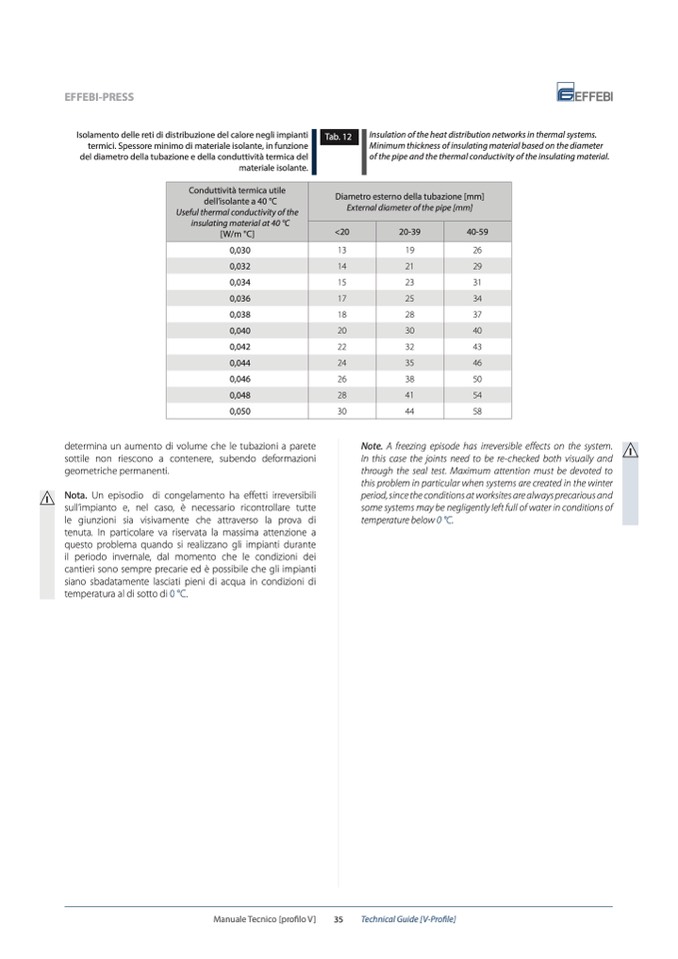
EFFEBI-PRESS
Isolamento delle reti di distribuzione del calore negli impianti
termici. Spessore minimo di materiale isolante, in funzione
del diametro della tubazione e della conduttivit
à termica del
materiale isolante.
Tab. 12
Insulation of the heat distribution networks in thermal systems.
Minimum thickness of insulating material based on the diameter
of the pipe and the thermal conductivity of the insulating material.
Conduttività termica utile
dell’isolante a 40 °C
Useful thermal conductivity of the
insulating material at 40 °C
[W/m °C]
Diametro esterno della tubazione [mm]
External diameter of the pipe [mm]
<20
20-39
40-59
0,030
13
19
26
0,032
14
21
29
0,034
15
23
31
0,036
17
25
34
0,038
18
28
37
0,040
20
30
40
0,042
22
32
43
0,044
24
35
46
0,046
26
38
50
0,048
28
41
54
0,050
30
44
58
determina un aumento di volume che le tubazioni a parete
sottile non riescono a contenere, subendo deformazioni
geometriche permanenti.
Nota. Un episodio di congelamento ha effetti irreversibili
sull’impianto e, nel caso, è necessario ricontrollare tutte
le giunzioni sia visivamente che attraverso la prova di
tenuta. In particolare va riservata la massima attenzione a
questo problema quando si realizzano gli impianti durante
il periodo invernale, dal momento che le condizioni dei
cantieri sono sempre precarie ed è possibile che gli impianti
siano sbadatamente lasciati pieni di acqua in condizioni di
temperatura al di sotto di 0 °C.
Note. A freezing episode has irreversible effects on the system.
In this case the joints need to be re-checked both visually and
through the seal test. Maximum attention must be devoted to
this problem in particular when systems are created in the winter
period, since the conditions at worksites are always precarious and
some systems may be negligently left full of water in conditions of
temperature below 0 °C.
Manuale Tecnico [profilo V]
35
Technical Guide [V-Profile]
I
I

